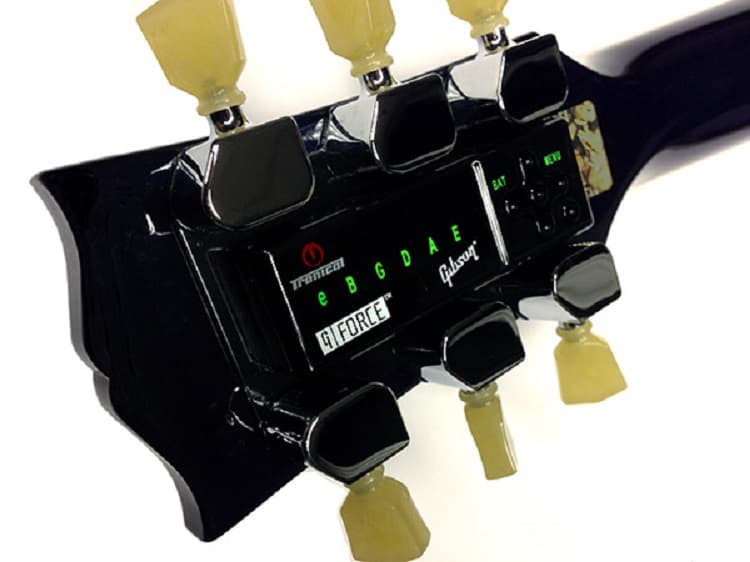
Guitars are probably the most satisfying instrument you can play today. Sure, this is a pretty individual thing, but considering how many supporting devices there are on the market for electric and acoustic guitars, it’s fair to say that these two instruments offer the most range and versatility if we disregard digital instruments.
Although modern guitars are far away from their oldest predecessor, the fact is that the core idea behind the instrument hasn’t changed. You still have strings that strung across a neck. No matter how perfect a guitar is, or what kind of features it brings, it won’t do you any good unless it is in tune.
Tuning a guitar is imperative if you want to play anything with any form of precision. Even one string out of tune can cause havoc to the composition you are playing. Luckily, we have tuners today which are capable of tuning the guitar with great accuracy.
Back in the day you had to do everything by ear, or you were limited to using crude tools to tune the guitar properly. Modern tuners come in a variety of shapes and forms. The latest and greatest are automatic tuners like Gibson G Force tuner. This is the next step in guitar tuning, and today we are going to talk about what this new device has to offer.
An Overview
Your average modern tuner is a box that catches sound from your guitar, either by proximity or cable, and tells you how far off the desired pitch you are. You then have to manually tune the strings by manipulating the tuning pegs. This leaves a decent amount of room for error.
The first positive readings are not always true. You may think the string is in the right pitch, but hitting it several times and plugging the cable back into the tuner will often show that you are off pitch. What G Force tuning does is eliminate this margin of error.
Features
When you get the Gibson G Force tuning, you quickly find out it comes with its own tuner machines. This is because each of those has a small servo motor inside which takes care of tuning. Hence, automatic tuner. The way this thing works is by sensing the vibration of the strings. That frequency is picked up by a set of sensors who then calculate how far of your desired tuning the strings are. Data is processed and servo motors are instructed to make appropriate adjustments. Pretty simple process.
The tuner itself is positioned between the tuning machines. Control panel is divided into two sections. On the left side you will see a scale with the notes listed in order, and the right side is where the buttons are that you need in order to use this tuner.
 Aside from being able to choose the standard tuning, G Force tuner offers some additional features. You can save your own tuning in the preset memory, and recall them whenever you need to.
Aside from being able to choose the standard tuning, G Force tuner offers some additional features. You can save your own tuning in the preset memory, and recall them whenever you need to.
You can add offset pitch to each individual string and even tune the guitar with a capo on. There is definitely a lot of versatility at your disposal.
Performance
A lot of people still think G Force tuning is a gimmick – something that will go out of style soon. On the other hand, this thing is incredibly practical. All you have to do in order to tune a guitar is to select the tuning you want and strum the strings.
The tuner will tune all six strings at the same time as long as the battery is above 60%. Otherwise, it will tune them one by one. The precision with which G Force works on the strings is impressive. You don’t have to worry about the tuning being off even a bit.
There are some downsides to this design, though. It’s bulky for one, and it requires you to change your tuning pegs. Although very practical, you won’t find a lot of people who are ready to replace the hardware on their guitar just so they could have an automatic tuner on there. One great thing about this tuner is that it remains dormant while you are playing.
 Some folks were worried that it would activate when you bend the strings, and thus change their pitch. However, that’s not how it works. You need to turn it on before it can do anything to the tuning of your guitar.
Some folks were worried that it would activate when you bend the strings, and thus change their pitch. However, that’s not how it works. You need to turn it on before it can do anything to the tuning of your guitar.
What we like
No matter what people say, this is probably going to be the future of guitar tuners. Maybe those later models will be less bulky and intrusive, but automatic tuning is definitely going to become a thing. G Force tuner is a great start in that direction. It works as intended, and is able to quickly tune your guitar to whatever tuning you have selected.
What we don’t like
Its size, the fact that you need to remove original hardware, and it being locked to one instrument only, make this tuner a bit impractical for a large number of people. On top of that, it is definitely not cheap.
Conclusion
Automatic tuners like G Force tuning will probably evolve into more practical and affordable models. It is fair to say that these are going to be the tuners of tomorrow. In its present state, G Force tuning is still not the most practical option despite how capable it is, and what kind of features it offers.
Your average tuner still does a similar job, granted with a lot more effort on our side as guitar players, but there is still no real incentive to go for the automatic tuner over any regular one.
Once the price comes down and you are able to mount or dismount the tuner whenever you want to, these new designs will become more popular. Until that day comes, most guitar players will stick to regular tuners. If you’re interested in G Force tuning, we suggest you put pros and cons on a piece of paper and figure out whether it’s worth it.



